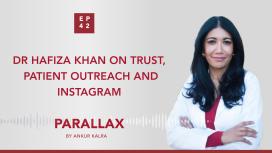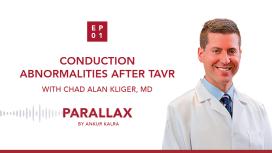
This week on Parallax, Dr Ankur Kalra welcomes Eric Radtke, Vice President at Worldwide Innovations & Technologies, Inc, and Barbara Breininger, a cardiovascular radiologic technologist and clinical manager with 26 years of experience.
This special episode dives deep into the crucial topic of radiation hygiene, exploring it from the perspectives of both manufacturers and users of radiation safety products.
Barbara Breininger shares her experiences traveling nationwide to educate healthcare professionals on radiation safety, emphasizing the need for collective awareness and best practices in cath labs.
Eric Radtke discusses the company's evolving focus on radiation safety, the origins of their initiatives, and the concerning impacts of radiation exposure as revealed by recent studies. We'll also explore practical steps to enhance safety and delve into the RADPAD tools that can shield interventional cardiologists and allied professionals from exposure.
How can we protect ourselves from radiation in the Cath lab? How can we raise awareness of radiation hygiene?
Trials mentioned in the episode:
Aizer A, Qiu JK, Cheng AV, et al. Utilization of a Radiation Safety Time-Out Reduces Radiation Exposure During Electrophysiology Procedures. JACC EP 2019; 5:5:626-634. doi.org/10.1016/j.jacep.2018.12.002
Ahmad IM, Abdalla YM, Moore TA, et al. Healthcare Workers Occupationally Exposed to Ionizing Radiation Exhibit Altered Levels of Inflammatory Cytokines and Redox Parameters. Antioxidants 2019; 8:1. doi.org/10.3390/antiox8010012
Support: This episode is supported by Radcliffe Cardiology; it received no funding from Worldwide Innovations & Technologies.
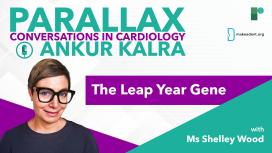
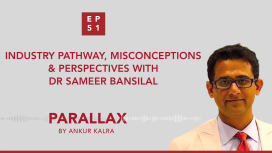
Dr. Bansilal was an Assistant Professor of Medicine at the Icahn School of Medicine at Mount Sinai when he decided to seek an alternative pathway to make an impact on patients’ lives.
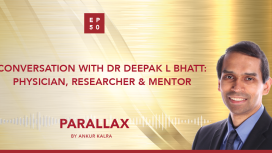
In the 50th episode of Parallax, Dr. Ankur Kalra’s guest is Dr. Deepak L. Bhatt leading physician, researcher, lecturer, and educator who has authored or co-authored over 1650 publications and was recipient of the ACC’s Distinguished Mentor Award in 2018 and AHA’s Distinguished Scientist Award in 2019.
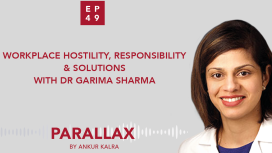
The American College of Cardiology surveyed cardiologists across the globe to have a more detailed understanding on the impact of hostility, discrimination, and harassment in the workplace. Of almost 6000 cardiologists who took part in the survey 44% reported hostile work environment.
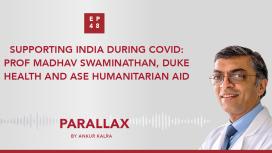
In this week's latest podcast episode, host, Ankur Kalra, MD, meets guest Prof Madhav Swaminathan (Duke University Health System, NC, US) to discuss how he has orchestrated a major humanitarian effort, in association with Duke University Health and The American Society of Echocardiography, to supply ventilation equipment and PPE to hospitals and NGOs during the current COVID-19 crisis in New Delhi, India.
Hear them discuss the challenges and learnings associated with the supply chain, inventory, logistics and cost to deliver this humanitarian effort; which most recently resulted in $140,000 of life-changing equipment being delivered to four key hospitals in New Delhi. A most inspirational episode.

In this candid and spiritual conversation Amit and Ankur take a journey through former episodes of Parallax and Ankur’s writings to explore what it takes to strive for a deeper knowledge of ourselves; or, as Ankur puts it, dharma, the inherent order of reality.

Parallax’s guest this week is Dr Eric David Adler, Medical director of heart transplant and mechanical circulatory support at UC San Diego Health.

How did Dr Gragossian receive her diagnosis? How does she feel about her new reality? What drives her? What is her message to our listeners?
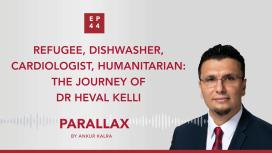
Just after 9/11, Heval, the 18-year-old Syrian Kurdish refugee found a job as a dishwasher. At this point, he was the sole provider of his family. The pressure that comes from being poor did not leave him for many years. Today, he is firm believer in giving back to underserved communities by spreading awareness within the medical community. As he says, well-meaning people of privilege are sometimes afraid to act. What we need is more people to bridge the gap and find ways to help each other.
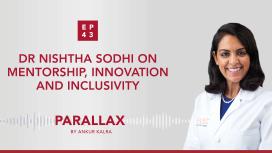
What drives Dr Nishtha Sodhi? What were the formative moments of Dr Sodhi’s career? What are the new frontiers of cardiology?
